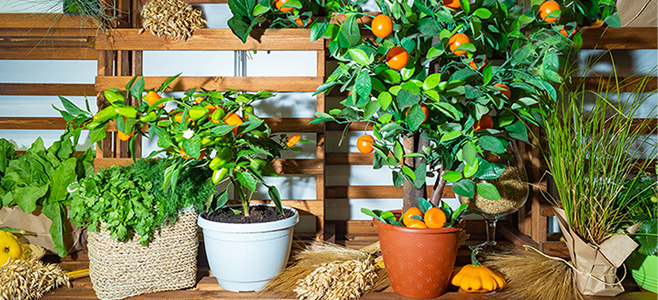
Did someone send you a citrus tree for Christmas, or did you find an orange tree online you’re thinking of buying? If so, lucky you! Citrus trees are wonderful additions to your garden: they look pretty, smell great, and – of course – produce delicious fruit.
With the availability of dwarf citrus plants, many people are searching for online citrus trees for sale that they can grow indoors some or all of the time – we’re no longer limited by our growing zone! This is great news – but if you don’t live in a tropical or sub-tropical climate, the thought of dealing with lemon tree diseases and pests or keeping your citrus trees safe from other critters may have you feeling intimidated. After all, citrus trees are technically evergreens, which mean there’s nearly always new, tender leaves, buds and blossoms that might tempt wildlife.
Don’t let that stop you from enjoying your citrus tree! Happily, most critters aren’t that crazy about the taste of citrus. And for those that make an exception, we have some tips for dealing with them. Read on:
Protecting Your Citrus Tree From: Ship Rats
These common, gray-and-white pests are also known as “roof rats” because they like to hang out in attics and the upper parts of buildings as well as treetops. You’re more likely to have trouble with them if you live in a warmer climate, along the Pacific Coast or near the Gulf of Mexico, but if you find an orange on your tree that’s had peel chewed off, it’s a safe bet that this is the pest you’re dealing with.
To discourage these pesky critters, you should, if possible, plant your new citrus tree away from outbuildings or other tall structures or other tall plants the rats can use to leap to it. Another tip is to prune any low-hanging branches to discourage rats from climbing up to sample the fruit. Also, make sure not to leave fallen fruit lying on the ground so it won’t attract the rats in the first place.
Finally, if you do suspect your tree is being targeted by tree rats, try to locate where they’re coming from so you can eliminate their habitat.
Protecting Your Citrus Tree From: Rabbits
They might be cute and fluffy, but anyone who’s ever tried to grow a garden will tell you that rabbits are a common enemy! And yes, it’s not just lettuce and carrots they’ll target – they’ll go after your young citrus trees, too, sneaking into your space at night to nibble on the tender bark of young trees and reaching up to sample the leaves and buds on low-hanging branches.
If you’re planting your young tree in the ground, the best way to fend off Peter and his fellow cottontails is to fence it. You can easily make a tree guard out of chicken wire: first, form an 18″W x 2½’H cylinder and bury it six inches in the ground around the tree. Next, drive three 4’L lengths of iron rebar a foot into the ground, spacing it equally around the tree just inside the wire netting. Finally, – fasten the netting to the rebar with baling wire – this will keep the rabbits from bending the wire inward to reach the leaves on your tree. The good news is that you won’t have to keep this fence on your tree forever – by the time a citrus tree reaches four or five years old, rabbits will no longer pose a threat to it.
Protecting Your Citrus Tree From: Deer
If you’ve had problems in the past with deer helping themselves to your tulips and other plants, you may have trouble if you keep your lemon trees outside. The good news is that there are plenty of plants deer prefer over citrus. The bad news is that they WILL eat citrus from time to time.
Many lemon tree varieties have thorns when they’re quite young (these disappear as the tree grows older), but lemon tree thorns won’t stop a determined deer. You can help your young citrus trees out by surrounding them with deer-resistant plants like onion, sugar maples, and strong-smelling herbs like oregano, rosemary, sage, and mint varieties.
Protecting Your Citrus Tree From: Orange Dog Caterpillars
It’s a pleasure to see those gorgeous, black-and-gold swallowtail butterflies fluttering around your garden, but they can be a menace to young citrus trees while still in the caterpillar stage. Mature trees shouldn’t have a problem, but little ones can suffer significant leaf damage if these pests go unchecked. The only real way to stop them is to pick them off by hand, so keep an eye out – around 1-2″ long, these caterpillars are gray, brown and cream in color and look a lot like bird droppings: as soon as you see them, send them packing!
Protecting Your Citrus Tree From: Aphids, Mealybugs and Whiteflies
Sadly, keeping your potted citrus tree indoors will not make it immune to all pests – indoor trees often attract sap-sucking insects. The good news is that they’re easily dealt with – you can either rinse them off with a blast of water from a sprayer or hose or wipe off the leaves of your tree with cotton swabs soaked in soapy water. Examine your citrus tree’s leaves often (don’t neglect the undersides) to ensure you catch these pests early.
Related Links:
Best Plants to Surround your Citrus Tree With
How to Plant and Grow an Avocado Tree
Citrus Diseases and Pest Treatment

